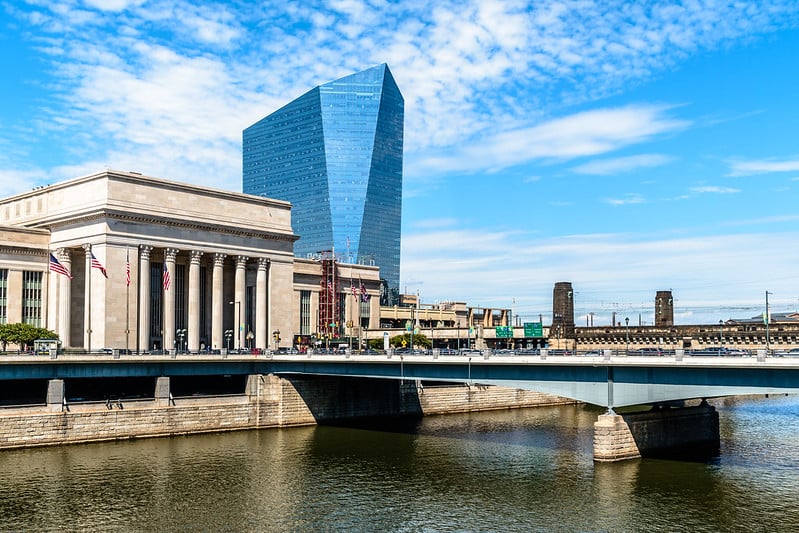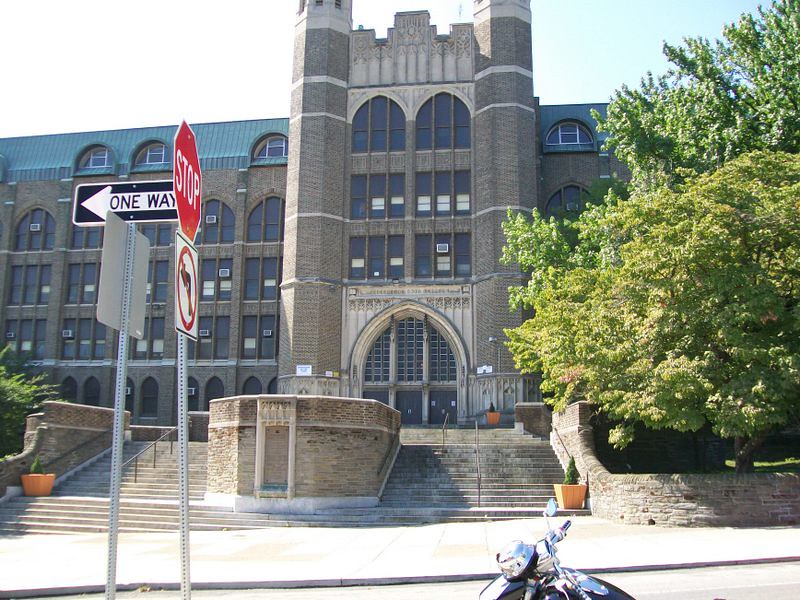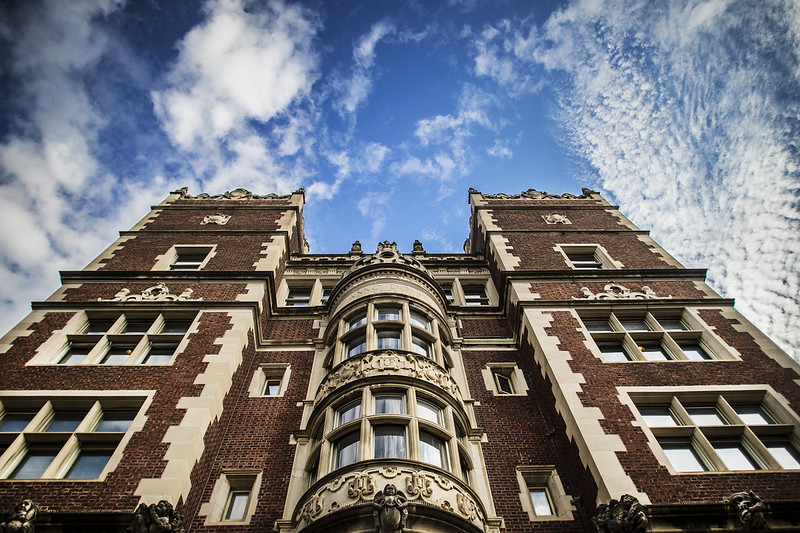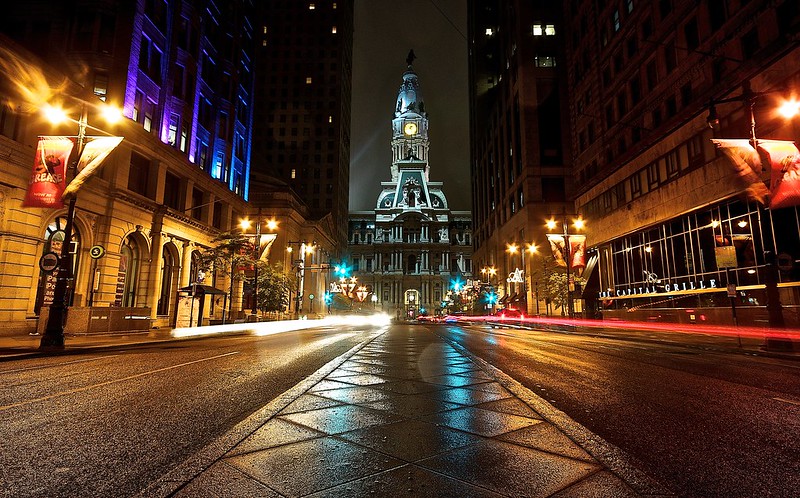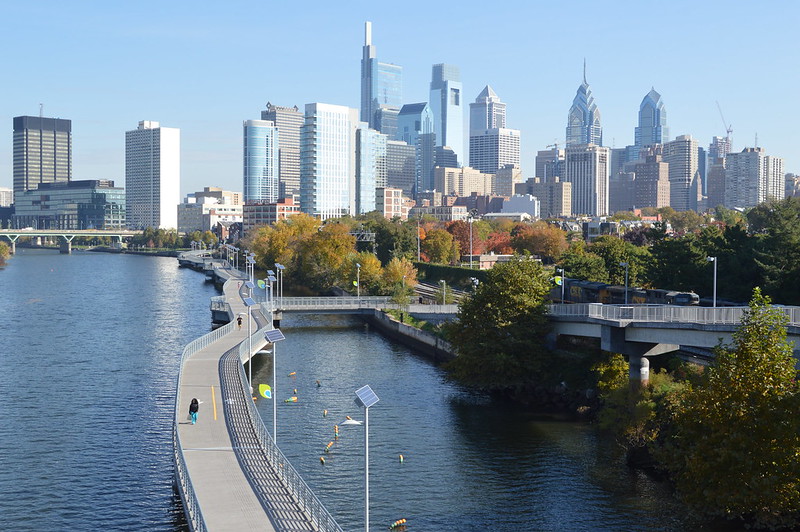Philadelphia is the capital and largest city in the state of Pennsylvania, US. With a 2020 population of 1,603,797, it is the sixth-most populated city and the most populous city in the state of Pennsylvania.
It is one of the oldest cities in the nation, having been founded in 1682 as the capital of the Pennsylvania Colony. It is the birthplace of the country. Philly may be old and full of history, but it’s still a popular destination for millennials and tourists.
Ranked as one of the most affordable large cities on the East Coast, the state combines big-city employment and educational prospects with an extraordinary cultural, sports, and music scene and a unique role in American history.
We’ve gathered information and tools for anyone considering relocating to Philadelphia to make the decision easier. Even if you are unsure about moving to the State, this guide will help you make an informed decision as regards your relocation.
Cost of Living in Philadelphia
Based on a national average of 100, the cost of living in Philadelphia, PA is 101.2. If you’re relocating to Philadelphia, you should expect a somewhat higher cost of living than the national average.
- Renting an Apartment: The average rental price is $1,774, 11 percent higher than the national average. Renters account for nearly 46 percent of Philadelphia residents. If renting a property is an option for you while you consider moving to Philadelphia, approximately 3.3 percent of the city’s homes and flats are available for rent. The average cost of different apartments available for rent are as follows:
- Studio apartment: $1,101;
- 1-bedroom apartment: $1,450;
- 2-bedroom apartment: $1,692;
- 3-bedroom apartment: $2,374;
- 4-bedroom apartment: $2,809.
- Buying a Home: Philly is the country’s third-most “trendy” and cheap metropolitan area. The median property value in Philadelphia is $227,938, which is substantially cheaper than in many other US cities, therefore purchasing a home should be one of your top objectives when relocating to the city. Homeownership accounts for 53 percent of the city’s population.
- The Cost of Utilities: The typical monthly utility bill is roughly $150.32, which covers electricity, heat/cooling, water, and rubbish pickup. Adding internet costs an extra $60.99 per month on average, for a total monthly spend of $211.31.
- The Cost of Food: The average Philadelphian spends $3,690 per year on food. This cost rises to a stunning $10,806 per year for a family of four with two adults and two children. It’s worth noting that those figures are based on the assumption that you prepare every meal and snack at home.
Taxes
- Income Tax: Pennsylvania has a flat income tax rate of 3.07 percent. Many cities in Pennsylvania levy a Local Earned Income Tax, which is normally 1% but can reach roughly 3.9 percent in some cases. This tax is capped at 2% in smaller municipalities by state law. However, you’ll find greater rates in several larger cities, such as Pittsburgh and Philadelphia.
- Property Taxes: Property taxes in Philadelphia are presently 1.3998 percent of the assessed value of your home per year. The city receives 0.6317 percent, and the school district receives 0.7681 percent.
- Sales Tax Rate: Determined by the exact street address and jurisdiction of business, the minimum combined sales tax rate for Philly is 8 percent.
The best neighborhoods in Philadelphia
Philadelphia is a city with over 100 separate but interconnected neighborhoods. From the Great Northeast to South Philly, neighborhoods are diverse and pleasant, with stoop-front rowhouses, detached homes, and high-rise flats and condos.
There are several elements to consider when looking for the Philadelphia area where you’ll feel most at home, in addition to economic and transportation issues. Depending on what your preferences are, which could be; walking distance popular restaurants, historic landmarks, proximity to school area, out in the suburbs, or even how safe the streets are. These neighborhoods have been organized to serve as a spectrum for you to choose from.
- Chestnut Hill (Northwest Philadelphia): Because of its bucolic beauty and milder summer temperatures due to its higher elevation, Chestnut Hill became a favored retreat location for the Center City aristocracy during the Revolutionary War. The high-end area is calm today, with Victorian townhomes and antique mansions lining residential streets, yet bustles with activity along cobblestoned Germantown Avenue.
- Main Line (Northwest Philadelphia Suburbs): The Main Line is a collection of 20 or more contiguous wealthy communities located northwest of Philadelphia on the borders of Montgomery, Delaware, and Chester Counties. The Main Line is home to some of the wealthiest communities in the country, as well as a dozen university towns. Aronimink, Merion, and the 130-year-old Philadelphia Country Club are among the world-famous golf clubs in the old money suburbs. The Devon Horse Show, America’s oldest and largest horse competition, is held in the area.
- Conshohocken (Montgomery County Suburb): This enclave is a hub for both tech companies and young individuals working in the surrounding areas. Because of its location as a transit hub, “Conshy” has exploded with suburban-chic and cosmopolitan residential dwellings and mid-priced high-rise rental towers during the last decade.
- Northern Liberties (North Philadelphia): In the 1800s, the area was home to mills, factories, foundries, and breweries, but today it is one of Philadelphia’s most attractive renovated districts, with soaring property and rental rates. Some of Philly’s trendiest cafes and bars, like Bourbon & Branch, Green Eggs Cafe, and Yards Brewing Company, may be found in “NoLibs.”
- Old City (Center City): Walking through the streets of Old City, where some of America’s greatest individuals previously resided — from William Penn to Ben Franklin to George Washington — it’s impossible not to take in the history.
- Anghorne (Bucks County Suburb): Sesame Place is a better destination when looking for a great place in the suburbs for a family to live. The young children’s theme park is a unique focal point of this lovely suburb, coupled with the solidly rated public schools in the city. Langhorne, both the dual boroughs and greater Middletown Township collectively referred to as Langhorne, is an important business and retail center in the charming mid-range family destination of Bucks County.
- Overbrook (West Philadelphia): West Philadelphia’s suburban-style neighborhood is one of the city’s most attractive and fairly priced upper-middle to middle-class family residential areas. The neighborhood’s family focal point is the century-old Overbrook High School, which boasts Chamberlain and Smith among its alumni, as well as a slew of other hoop and hip-hop legends.
Weather and Climate
Philadelphia has an annual average of 207 sunny days. So, if you despise winters and the cold, relocating to Philadelphia is a fantastic choice.
- Winter: Winters are mildly cold, with daily temperatures touching the freezing mark during the holiday season.
- Spring: Philadelphia receives 47.2 inches of rain on average per year, which is greater than the national average of 38.1 inches for the same time period.
- Summer: Summers are hot and muggy, with an average high of slightly under 90 degrees Fahrenheit in July.
- Fall: The autumn colors usually peak from mid-October to early November and the weather is ideal for most outdoor activities. Early in the month, the afternoon temperatures are very pleasant, averaging in the lower 70s f (22-23C) with overnight lows in the mid to upper 50s f (about 14C).
Education
The city of Philadelphia has the highest concentration of higher education schools per population in the country. There are seven medical institutions in Philadelphia, as well as 85 colleges, technical schools, and universities. If you’re planning on attending college in Philadelphia, PA, you’ll have a lot of possibilities. From Ivy League to State School, Liberal Arts, Seven Sisters, Jesuit University, and more, there’s something for everyone. There are seven medical institutions in Philadelphia, as well as 85 colleges, technical schools, and universities.
Best Elementary Schools in Philadelphia
- Meredith William M School;
- Greenfield Albert M School;
- Penn Alexander School;
- Mccall Gen George A School;
- Jenks Abram School.
Best Middle Schools in Philadelphia
- Masterman Julia R Sec School;
- Penn Alexander School;
- Gamp;
- Carver HS;
- Meredith William M School.
Best High Schools in Philadelphia
- Julia R. Masterman Secondary School;
- Downingtown STEM Academy;
- Charter School of Wilmington;
- Newark Charter School;
- Central High School.
Best Colleges/Universities in Philadelphia
-
- University of Pennsylvania;
- Haverford College;
- Swarthmore College;
- Strayer University — Delaware;
- Villanova University.
Job Market
Philadelphia is one of the fastest-growing cities in the country, particularly in the manufacturing and technology sectors, so if you’re relocating here for work, you’ve got plenty of reasons to hurry up and pack your belongings. Newcomers are drawn to the city’s job market by opportunities in higher education, research, and government.
The University of Pennsylvania and Thomas Jefferson University Hospitals are among the city’s many big employers in the education and healthcare industries. Philadelphia has a high need for medical assistants and doctors due to its famous medical facilities. Furthermore, the state provides several research opportunities for healthcare experts.
According to ZipRecruiter, Philadelphia now has over 160,000 job openings, with full-time, part-time, and freelance employment available. Annual pay for full-time employees range from $36,000 to $106,000.
Transportation
Commuting in and around Philadelphia is simple and convenient, especially when compared to other northeast cities. According to U.S. Census data, the average one-way commute time in the state is 31.5 minutes, with 21.3 percent using public transportation.
The highway is easily accessible. Philadelphia has direct access to a vast network of freeways, most notably I-95, which runs across the city from north to south. As well as the Schuylkill Expressway (I-76), which follows the Schuylkill River.
You can get by without a car, but you are not required to have one. Everything is within walking distance, and there are plenty of cheap Ubers and cabs. You can also ride a bike. There are bike racks located throughout the city, but be cautious of aggressive driving and cobblestone streets when biking.
SEPTA (South Eastern Pennsylvania Transportation Authority) is a regional rail system that operates a vast public transportation network that includes buses, light rail, trolleys, and rapid transit. The public transportation system is excellent, and you can go practically anywhere in the city in under 20 minutes. If you’re thinking about relocating to the suburbs, Pennsylvania and New Jersey are both conveniently accessible by train and bus.
Entertainment
Philadelphia’s arts, music, and culture are all in perfect harmony. While walking around the city, you will see the city’s importance in terms of arts and culture. Exotic spots to explore the greatest of arts, music, and culture can be found all across the city.
Legendary taverns, vibrant clubs, and several late-night dining venues are all part of the Philadelphia nightlife. Once you’ve arrived, you should be aware that the after-dark scene is quite lively.
Whether you want to try your luck at a casino, laugh it up at a comedy club, play some retro video games, grab a beer at a sports bar — or just about anything else — there’s something for everyone.
Here are some of the fun things to do in Philly:
- Free performances at Kimmel Center;
- Free concerts Fridays at noon at World Cafe Live;
- Enjoy an authentic Philly cheese steak;
- Tour Independence Hall, the birthplace of the United States.
Some of the remarkable outdoor attractions include:
-
- Schuylkill River Trail;
- Treetops Quest;
- Marsh Creek State Park;
- River Tours in Manayunk;
- Foliage at Bowman’s Hill Tower.
Philadelphia, which primarily appeals to Millennials, can be a fantastic city to move to depending on your lifestyle and what you desire in any location you call home. For outdoor enthusiasts, the city’s historic landmarks and renowned attractions make it a terrific spot to visit.
Philadelphia appeals to many individuals due to its high house affordability rate, vast green space, beaches, restaurants, sports, nightlife, parks, and mountains, among other things. If all of these appeals to you, relocating to Philadelphia is the best option.
Thank you for reading our article. You can always order the services of Starkmovers company. Here is a list of our most popular services:
- Moving from Boston to Pennsylvania;
- Moving from Boston to Philadelphia;
- Moving from Chicago to Philadelphia.
We are waiting for your calls!
